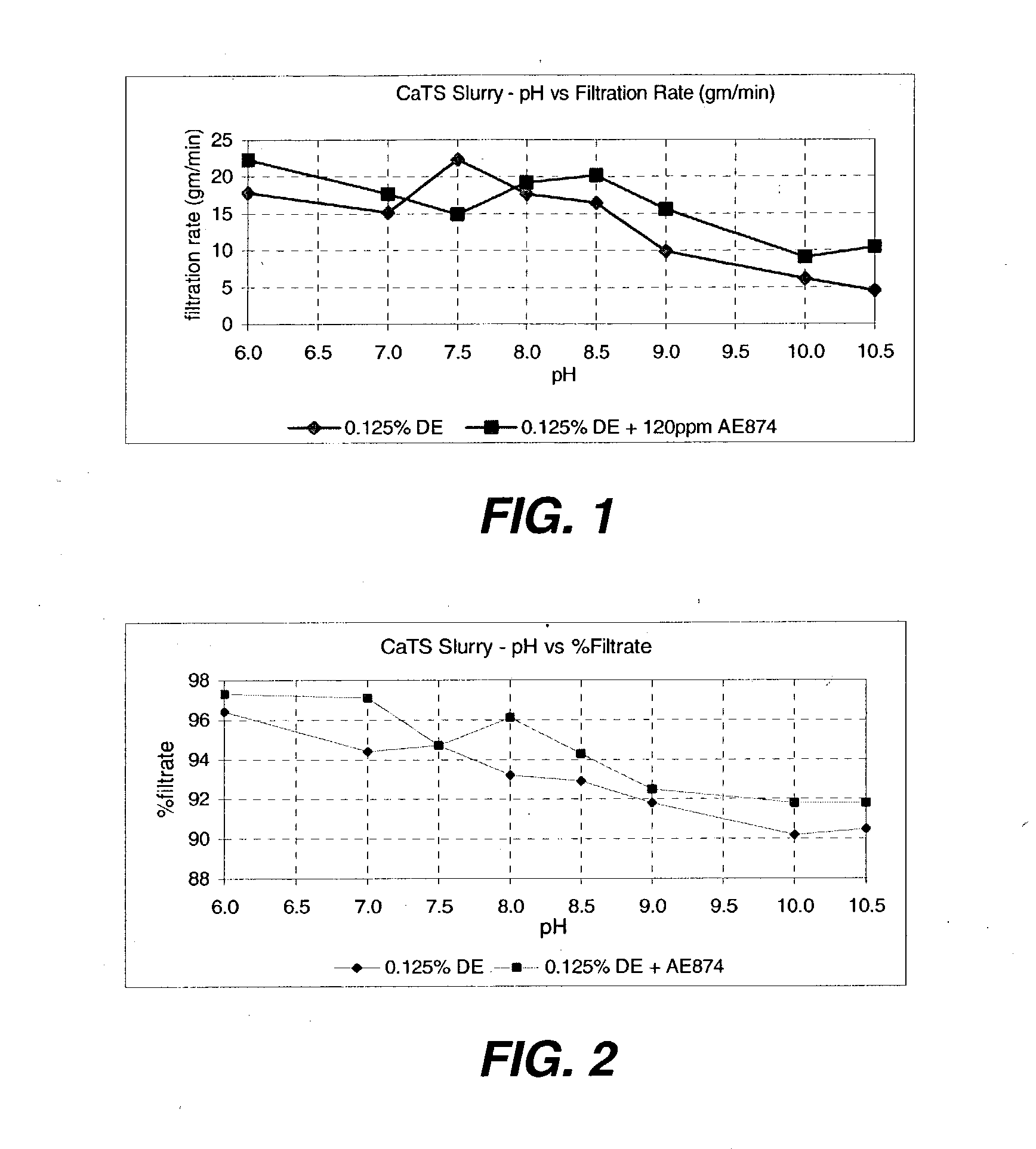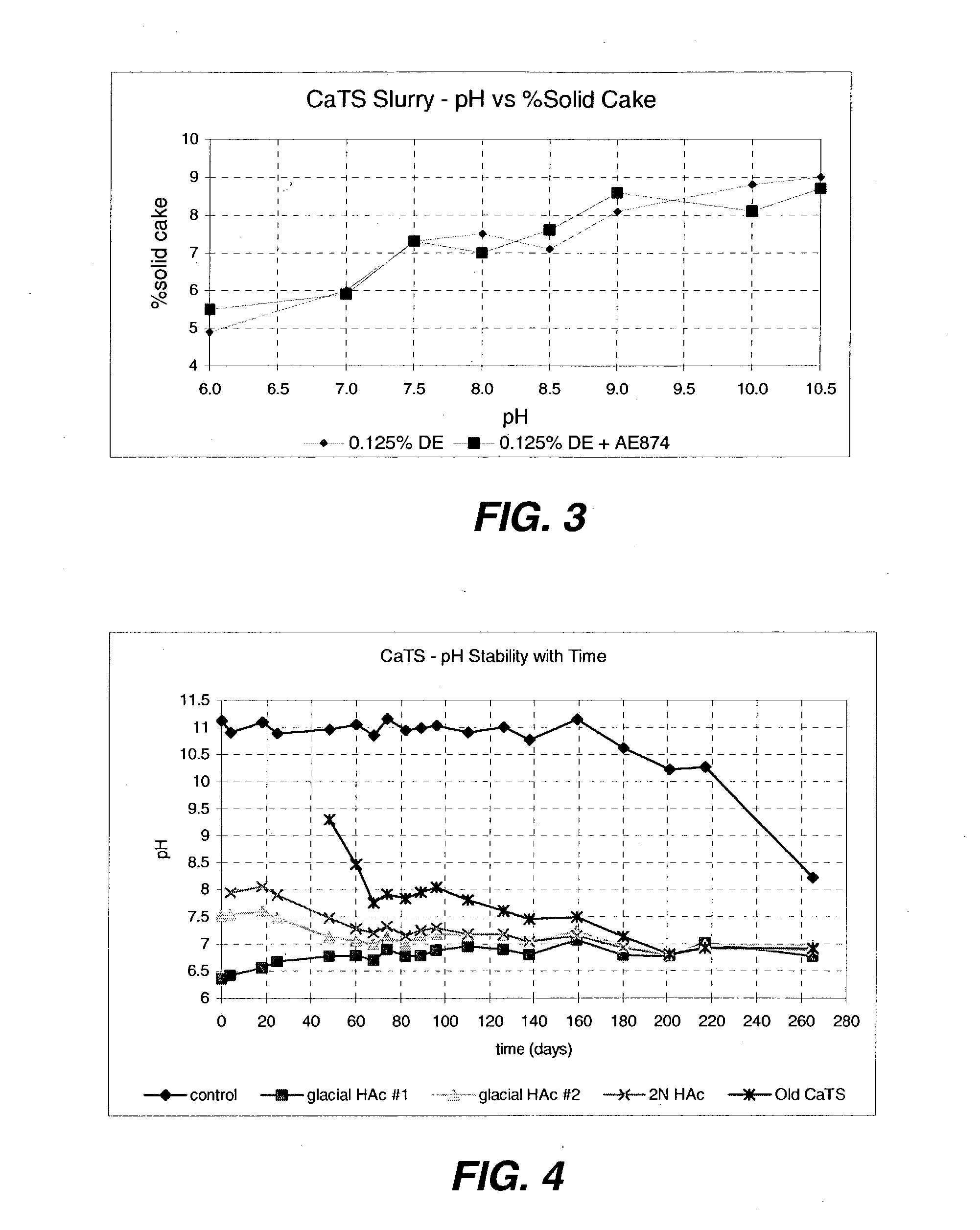Process and apparatus for preparing calcium thiosulfate solution
a technology of calcium thiosulfate and apparatus, which is applied in the direction of chemistry apparatus and processes, sulfur compounds, chemical/physical/physical-chemical processes, etc., can solve the problems of high cost of raw materials and equipment, unstable calcium hydrosulfide, and decomposition of calcium hydrosulfide to form hydrogen sulfide,
- Summary
- Abstract
- Description
- Claims
- Application Information
AI Technical Summary
Problems solved by technology
Method used
Image
Examples
example 2
[0084] 24 grams of sulfur is charged into the stirred, slacked slurry prepared in Example 1. The stirred mixture is heated to 90.degree. C. The heating and stirring is continued for about 3 hours until all the sulfur is fully reacted and a lime-sulfur slurry has formed.
example 3
Calcium Thiosulfate Preparation
[0085] The lime-sulfur slurry prepared in Example 2 is transferred to a stirred reactor capable of being pressurized and equipped with an inlet and outlet for air purge and introduction of oxygen, a thermometer, and a cooling system. Moderate stirring is applied to the mixture to provide an even interface of liquid-gas and with no vortex formation. The reactor is purged with oxygen and pressurized to 10-15 psig followed by venting to 0.0 psig. The mixture is heated to 55-75.degree. C. Oxygen is introduced to the reactor to initiate oxidation. Oxidation pressure of the system is maintained at 4-8 atmospheres. Oxidation is continued until oxygen is no longer absorbed, which is apparent by the absence of further pressure drop or heat rise.
example 4
[0086] The solution prepared in Example 3 is carefully adjusted to a pH of 7.5 to 8.5 in the filtering tank equipped with agitation and pH electrode with acetic acid. Filtration aid and 20-40 ppm of flocculent is added, and the mixture is filtered. The resulting calcium thiosulfate product is a colorless, odorless liquid. Concentration of nearly 27% can be prepared without significant loss of product to decomposition solids and without concentrating the product by evaporation.
PUM
 Login to View More
Login to View More Abstract
Description
Claims
Application Information
 Login to View More
Login to View More - R&D
- Intellectual Property
- Life Sciences
- Materials
- Tech Scout
- Unparalleled Data Quality
- Higher Quality Content
- 60% Fewer Hallucinations
Browse by: Latest US Patents, China's latest patents, Technical Efficacy Thesaurus, Application Domain, Technology Topic, Popular Technical Reports.
© 2025 PatSnap. All rights reserved.Legal|Privacy policy|Modern Slavery Act Transparency Statement|Sitemap|About US| Contact US: help@patsnap.com



